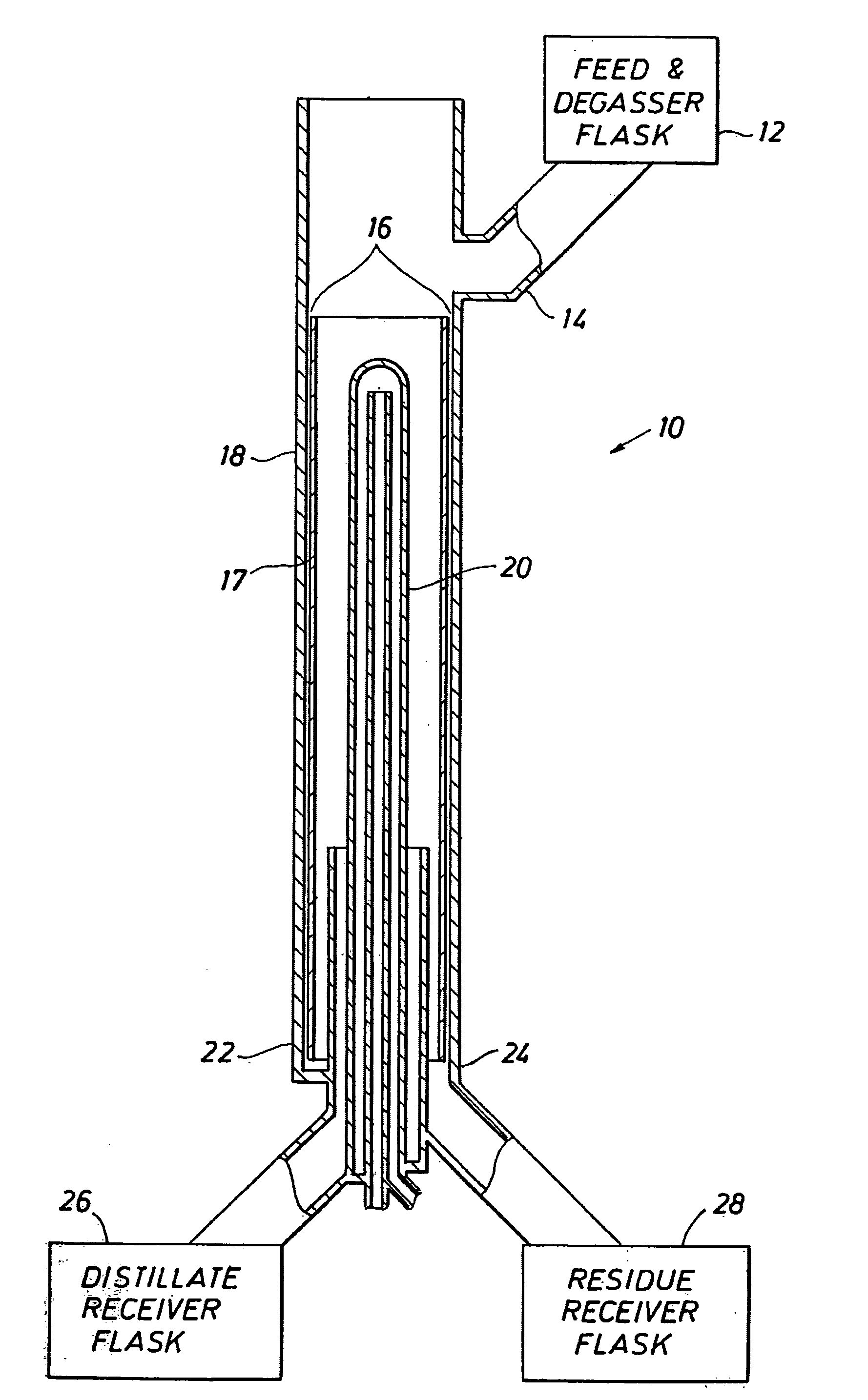Production of trimethylene carbonate from poly (trimethylene carbonate) by wiped film reactive evaporation
a technology of reactive evaporation and trimethylene carbonate, which is applied in the direction of chemical/physical/physical-chemical processes, chemical apparatus and processes, organic chemistry, etc., can solve the problem of practical upper limit of the molecular weight of the ptmc used
- Summary
- Abstract
- Description
- Claims
- Application Information
AI Technical Summary
Benefits of technology
Problems solved by technology
Method used
Image
Examples
examples
[0023] Oligomeric poly(trimethylene carbonate) was introduced into a Pope Scientific, Inc. 2 inch internal diameter glass wiped film still. The still was equipped with rotating wiper blades which were positioned about two inches (5 cm) below the PTMC feed inlet. The wiper blades spread the PTMC into a uniform thin film and kept it constantly agitated. The vacuum was connected at the distillate receiver and measured between a dry ice trap and the vacuum pump. The upper arm designed to connect to a vacuum trap was sealed and removed. The feed was pumped through a {fraction (1 / 4)} inch outside diameter stainless steel tube inside the original feed inlet to a point about 1 centimeter outside the vertical glass wall being wiped. The jacket connection nipples were replaced to accommodate circulation systems with no rubber parts.
[0024] High temperature oil was circulated through the jacket and the temperatures were measured at both the circulating pump and the jacket outlet. A water / glyco...
PUM
| Property | Measurement | Unit |
|---|---|---|
| Temperature | aaaaa | aaaaa |
| Temperature | aaaaa | aaaaa |
| Temperature | aaaaa | aaaaa |
Abstract
Description
Claims
Application Information
 Login to View More
Login to View More - R&D
- Intellectual Property
- Life Sciences
- Materials
- Tech Scout
- Unparalleled Data Quality
- Higher Quality Content
- 60% Fewer Hallucinations
Browse by: Latest US Patents, China's latest patents, Technical Efficacy Thesaurus, Application Domain, Technology Topic, Popular Technical Reports.
© 2025 PatSnap. All rights reserved.Legal|Privacy policy|Modern Slavery Act Transparency Statement|Sitemap|About US| Contact US: help@patsnap.com

